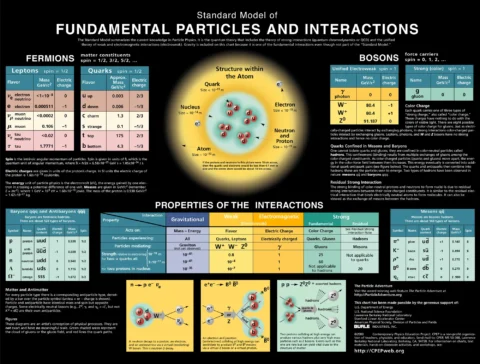Have you ever wondered how a computer can learn to diagnose diseases, drive a car, or even compose music? Imagine a world where machines can solve complex problems, predict outcomes, and make decisions with near-human accuracy. Welcome to the fascinating realm of applied artificial intelligence – a field that is revolutionizing industries, transforming economies, and reshaping the way we interact with technology.
In this comprehensive guide, we will explore the practical applications of artificial intelligence (AI) – not just the theory behind it, but how it is applied to real-world problems. We will discuss its evolution from abstract ideas to powerful tools, delve into its core concepts, and highlight key strategies and best practices for implementing AI solutions in various industries.
Throughout this post, we will cover:
- A clear definition of applied artificial intelligence and its historical evolution
- The core principles and mathematical foundations behind AI, including key equations such as \( J(\theta) = \frac{1}{2m}\sum_{i=1}^{m} (h_\theta(x^{(i)}) - y^{(i)})^2 \) for regression and the gradient descent update \( \theta := \theta - \alpha \nabla J(\theta) \)
- Key categories and techniques such as supervised, unsupervised, and reinforcement learning
- Real-world examples and case studies from healthcare, finance, transportation, and more
- Actionable tips, best practices, and strategies for integrating AI into existing workflows
- An FAQ section addressing common misconceptions and questions
- A concluding summary and call-to-action to help you continue your journey into the world of AI
Whether you're a student, researcher, entrepreneur, or just a curious mind, this guide is designed to provide you with a deep understanding of applied artificial intelligence and inspire you to explore its transformative potential. Let’s dive in and discover how applied AI is shaping our future.
Definition and Historical Background of Applied Artificial Intelligence
Applied artificial intelligence refers to the practical implementation of AI techniques and algorithms to solve real-world problems. Unlike theoretical AI, which focuses on abstract concepts and models, applied AI emphasizes deploying intelligent systems in various industries such as healthcare, finance, transportation, and manufacturing.
At its core, applied AI leverages methods such as machine learning, deep learning, natural language processing (NLP), computer vision, and robotics. These techniques allow machines to:
- Analyze vast amounts of data
- Learn from patterns and experiences
- Make predictions and decisions
- Interact with humans in natural ways
Historically, the journey of artificial intelligence began in the mid-20th century with pioneers like Alan Turing and John McCarthy. Turing's seminal paper, "Computing Machinery and Intelligence," posed the famous question, "Can machines think?" while McCarthy coined the term "artificial intelligence" in 1956 at the Dartmouth Conference. Over the decades, AI research experienced periods of intense optimism and challenging setbacks, known as AI winters, before experiencing a resurgence in the 21st century thanks to advances in computational power, big data, and sophisticated algorithms.
Today, applied AI is no longer a futuristic concept – it is embedded in everyday technologies. From recommendation systems on streaming services to autonomous vehicles navigating busy streets, AI applications are ubiquitous. To learn more about the historical development of AI, check out resources like Wikipedia: History of Artificial Intelligence and IBM's AI Guide.
Core Concepts and Mathematical Foundations of Applied Artificial Intelligence
To fully appreciate applied artificial intelligence, it is important to understand its underlying principles and mathematical foundations. AI relies heavily on statistical methods, probability theory, and optimization techniques. For instance, one of the most common tasks in machine learning is minimizing a cost function, which can be expressed as:
\( J(\theta) = \frac{1}{2m}\sum_{i=1}^{m} \left(h_\theta(x^{(i)}) - y^{(i)}\right)^2 \)
Here, \( J(\theta) \) is the cost function that measures the error between the predicted values \( h_\theta(x) \) and the actual values \( y \). The goal is to find the optimal parameters \( \theta \) that minimize this error.
One common method for achieving this is through gradient descent, where the parameters are iteratively updated using the rule:
\( \theta := \theta - \alpha \nabla J(\theta) \)
In this equation, \( \alpha \) is the learning rate and \( \nabla J(\theta) \) represents the gradient of the cost function with respect to \( \theta \). These mathematical tools form the backbone of many AI algorithms, including linear regression, logistic regression, and neural networks.
Deep learning, a subfield of AI, uses multi-layered neural networks to model complex patterns. A simple neural network layer can be expressed as:
\( y = f(Wx + b) \)
where \( W \) is the weight matrix, \( x \) is the input vector, \( b \) is the bias vector, and \( f \) is a non-linear activation function such as the sigmoid or ReLU function. These mathematical formulations enable computers to process unstructured data like images, audio, and text.
Mastery of these core concepts is essential for anyone looking to implement applied artificial intelligence solutions in real-world scenarios.
Categories and Techniques in Applied Artificial Intelligence
Applied artificial intelligence encompasses a wide range of techniques and approaches, each suited to different types of problems and industries. The main categories include:
1. Supervised Learning
In supervised learning, the algorithm is trained on labeled data. The goal is to learn a mapping from inputs to outputs, which can then be used to predict outcomes on new, unseen data. Common supervised learning algorithms include:
- Linear Regression
- Logistic Regression
- Support Vector Machines (SVMs)
- Decision Trees and Random Forests
For example, in a healthcare application, supervised learning can be used to predict patient outcomes based on historical data.
2. Unsupervised Learning
Unsupervised learning involves finding patterns or structures in unlabeled data. Techniques in this category include:
- Clustering (e.g., k-means clustering)
- Principal Component Analysis (PCA)
- Association Rule Learning
Unsupervised learning is particularly useful for market segmentation and anomaly detection.
3. Reinforcement Learning
In reinforcement learning, an agent learns to make decisions by interacting with an environment. The agent receives rewards or penalties based on its actions, and the goal is to maximize cumulative rewards. A typical reinforcement learning update rule is:
\( Q(s,a) := Q(s,a) + \alpha \left( r + \gamma \max_{a'} Q(s',a') - Q(s,a) \right) \)
Here, \( Q(s,a) \) is the quality of taking action \( a \) in state \( s \), \( r \) is the immediate reward, \( \gamma \) is the discount factor, and \( \alpha \) is the learning rate. Reinforcement learning is widely used in robotics, gaming, and autonomous vehicles.
4. Deep Learning
Deep learning is a specialized branch of machine learning that uses neural networks with many layers. It excels at processing large amounts of unstructured data. Convolutional Neural Networks (CNNs) are used for image recognition, while Recurrent Neural Networks (RNNs) are applied to time-series data and natural language processing.
Each of these categories has its own set of algorithms and best practices. When applied correctly, they enable the development of sophisticated AI systems that can learn, adapt, and solve complex problems.
Real-World Applications and Case Studies in Applied Artificial Intelligence
The power of applied artificial intelligence is best illustrated through real-world examples. Let’s look at some case studies and applications across different industries:
Healthcare
AI is transforming healthcare by enabling faster and more accurate diagnoses, personalized treatment plans, and predictive analytics. For instance, deep learning algorithms are used to analyze medical images and detect early signs of diseases such as cancer. One notable example is Google's DeepMind, which has developed AI models that can diagnose eye diseases with remarkable accuracy.
In addition, applied AI is used in drug discovery, where algorithms sift through massive datasets to identify potential therapeutic compounds. These systems not only reduce the time and cost involved in research but also enhance the overall efficiency of the healthcare system.
Finance
In the financial sector, applied AI is used for algorithmic trading, fraud detection, and risk management. Machine learning models analyze historical data to predict market trends and automate trading decisions. For example, hedge funds use complex AI algorithms to make split-second decisions in volatile markets.
Fraud detection systems employ anomaly detection techniques to identify suspicious transactions, saving billions in potential losses. Moreover, AI-driven chatbots and virtual assistants are improving customer service by providing instant support and personalized advice.
Transportation and Autonomous Vehicles
The automotive industry is undergoing a revolution with the advent of autonomous vehicles. Applied AI is at the heart of self-driving car technology, where computer vision, sensor fusion, and real-time decision-making come together to navigate complex road environments.
Companies like Tesla, Waymo, and Uber are investing heavily in AI research to improve vehicle safety and efficiency. Neural networks process inputs from cameras, LIDAR, and radar to identify objects and predict their movements, ensuring that the vehicle makes informed driving decisions.
Manufacturing and Robotics
In manufacturing, AI is used to optimize production lines, improve quality control, and predict equipment failures before they occur. Robotics, powered by applied AI, is transforming industries by automating repetitive tasks, thereby increasing efficiency and reducing operational costs.
For example, smart factories use AI to monitor production processes in real time, adjusting parameters dynamically to maximize output and minimize waste.
Retail and E-commerce
Applied AI is revolutionizing the retail industry through personalized recommendations, inventory management, and customer sentiment analysis. E-commerce platforms like Amazon and Alibaba use sophisticated AI algorithms to analyze customer behavior and optimize product recommendations.
Additionally, chatbots powered by natural language processing provide real-time customer service, while predictive analytics help retailers forecast demand and manage stock levels more effectively.
Strategies and Best Practices for Implementing Applied Artificial Intelligence
Successfully deploying applied artificial intelligence in an organization requires careful planning, robust data strategies, and continuous evaluation. Here are some actionable tips and best practices:
- Define Clear Objectives: Understand the specific problems you aim to solve with AI. Whether it’s improving customer service, optimizing operations, or enhancing product recommendations, a clear goal will guide your strategy.
- Invest in Quality Data: AI systems are only as good as the data they are trained on. Ensure you have access to high-quality, diverse, and relevant data.
- Choose the Right Algorithms: Different problems require different approaches. Evaluate whether supervised, unsupervised, or reinforcement learning is most appropriate for your needs.
- Emphasize Model Explainability: Especially in regulated industries like healthcare and finance, it is essential to understand and explain how your AI models arrive at their conclusions.
- Adopt a Phased Implementation: Start with pilot projects and gradually scale up your AI initiatives. This approach helps in managing risks and refining your models before full-scale deployment.
- Continuous Monitoring and Improvement: AI models require regular updates and monitoring to ensure they remain accurate as data patterns evolve.
- Focus on Ethical Considerations: Address issues related to data privacy, bias, and fairness. Ensure that your AI applications comply with relevant regulations and ethical standards.
By following these strategies, organizations can harness the full potential of applied artificial intelligence while mitigating risks and maximizing benefits.
Ethical Considerations in Applied Artificial Intelligence
As applied artificial intelligence becomes more prevalent, ethical considerations are paramount. AI has the potential to impact society in profound ways, and responsible implementation is critical.
Some key ethical issues include:
- Bias and Fairness: AI systems can inadvertently perpetuate biases present in the training data. It is essential to implement techniques that detect and mitigate bias.
- Data Privacy: The use of personal data in AI applications must comply with privacy laws and regulations. Transparency about data usage builds trust with users.
- Accountability: Establish clear guidelines for who is responsible for AI-driven decisions, especially in high-stakes domains such as healthcare and criminal justice.
- Job Displacement: The automation enabled by AI can lead to job displacement. It is important for organizations and governments to plan for workforce transitions and provide retraining programs.
Addressing these ethical challenges is essential for ensuring that the benefits of applied artificial intelligence are realized without compromising individual rights or societal values.
Frequently Asked Questions (FAQ) on Applied Artificial Intelligence
Q1: What is the difference between theoretical and applied artificial intelligence?
A: Theoretical AI focuses on developing new algorithms, models, and theories, while applied AI uses these techniques to solve practical problems in real-world scenarios.
Q2: How does applied AI impact industries like healthcare and finance?
A: In healthcare, applied AI improves diagnostic accuracy and personalizes treatment, while in finance, it enhances fraud detection, risk management, and algorithmic trading.
Q3: What are the most common algorithms used in applied AI?
A: Common algorithms include linear and logistic regression, decision trees, neural networks, and support vector machines, among others. The choice depends on the specific application and available data.
Q4: Is applied AI the same as machine learning?
A: Not exactly. Machine learning is a subset of AI that focuses on algorithms that learn from data. Applied AI encompasses machine learning along with other techniques like natural language processing and computer vision.
Q5: What ethical concerns should be considered when implementing applied AI?
A: Key ethical concerns include data privacy, bias and fairness, accountability, and the potential for job displacement. It is important to implement ethical guidelines and regulatory compliance measures.
Q6: Where can I learn more about applied AI?
A: There are many resources available online. Reputable sources include Khan Academy, Coursera, and industry blogs from companies like Google AI and IBM Watson.
Additional Resources and Further Reading
To further expand your knowledge on applied artificial intelligence, explore these valuable resources:
These platforms offer courses, tutorials, and articles that delve deeper into both the theoretical and practical aspects of AI.
Recap and Final Encouragement
In this extensive guide, we have covered the transformative field of applied artificial intelligence from multiple angles:
- We defined applied AI as the practical implementation of intelligent systems to solve real-world problems.
- We explored the historical evolution of AI, from the early ideas of Turing and McCarthy to today’s advanced neural networks.
- We delved into the core mathematical foundations that power AI algorithms, including cost functions and gradient descent.
- We examined various categories of AI – from supervised and unsupervised learning to reinforcement and deep learning.
- We provided real-world case studies from healthcare, finance, transportation, manufacturing, and retail.
- We offered actionable strategies and best practices for implementing AI solutions ethically and effectively.
- We addressed frequently asked questions to clear common misconceptions and guide further inquiry.
Mastering applied artificial intelligence is not just about understanding algorithms—it is about harnessing technology to drive innovation, improve decision-making, and create a better future. Every concept you learn and every strategy you implement brings you one step closer to becoming a proficient practitioner in this dynamic field.
Your Next Steps
Are you ready to transform your ideas into intelligent solutions? Here’s how you can continue your journey in applied artificial intelligence:
- Review this guide and take detailed notes on key concepts and strategies.
- Explore the additional resources linked above to deepen your understanding.
- Enroll in online courses on platforms like Coursera or Udacity to get hands-on experience.
- Join AI-focused communities and forums to discuss ideas, share experiences, and collaborate on projects.
- Subscribe to our newsletter for regular updates, tutorials, and expert insights into the world of AI.
- Share your thoughts and feedback in the comments below—your insights could help shape future content!
Every step you take towards mastering applied artificial intelligence not only enhances your skillset but also empowers you to be at the forefront of technological innovation. So, dive in, experiment, and join the revolution!
Final Thoughts
The future is here, and it is powered by applied artificial intelligence. From healthcare and finance to transportation and retail, AI is making a tangible impact on our daily lives. By embracing these technologies and understanding the principles behind them, you are not only preparing yourself for a rapidly evolving job market but also contributing to innovations that can change the world.
Remember, every breakthrough in AI started with a single idea and a commitment to learning. As you continue to explore the field, keep an open mind, stay curious, and never stop learning. The journey of mastering AI is continuous, and with each new concept you conquer, you become a more empowered and insightful problem solver.
Thank you for joining us on this deep dive into applied artificial intelligence. We hope you feel inspired and equipped to take on the challenges and opportunities that lie ahead.
Stay Connected and Keep Learning!
Your journey in the realm of applied artificial intelligence is just beginning, and we’re here to support you every step of the way. Subscribe to our newsletter for the latest tutorials, expert insights, and success stories that will inspire you to push the boundaries of innovation.
Join our community of learners and innovators, and share your experiences and questions in the comments below. Your feedback is invaluable and helps us create content that is both informative and inspiring.
Deep Dive: Advanced Topics and Further Exercises in Applied Artificial Intelligence
For those looking to push the boundaries of their knowledge, here are some advanced topics and exercises:
Advanced Topic 1: Neural Network Optimization
Experiment with optimizing neural networks using gradient descent. Consider the update rule:
\( \theta := \theta - \alpha \nabla J(\theta) \)
Try adjusting the learning rate \( \alpha \) and observe how it affects convergence. Experiment with different cost functions and analyze the impact on model performance.
Advanced Topic 2: Reinforcement Learning Applications
Develop a simple reinforcement learning model where an agent learns to navigate a maze. Implement the Q-learning update rule:
\( Q(s,a) := Q(s,a) + \alpha \left( r + \gamma \max_{a'} Q(s',a') - Q(s,a) \right) \)
Adjust parameters such as the discount factor \( \gamma \) and the learning rate \( \alpha \) to see how they influence the agent’s decision-making process.
Advanced Topic 3: AI in Natural Language Processing
Explore how transformer models and attention mechanisms work by diving into the mathematics of self-attention. A simplified self-attention mechanism can be described as:
\( \text{Attention}(Q,K,V) = \text{softmax}\left(\frac{QK^T}{\sqrt{d_k}}\right)V \)
Here, \( Q \), \( K \), and \( V \) are the query, key, and value matrices, and \( d_k \) is the dimension of the key vectors. Experiment with implementing a basic attention mechanism using Python libraries such as TensorFlow or PyTorch.
Practice Exercises
- Build a simple linear regression model to predict housing prices using gradient descent. Write out the cost function and update rules using MathJax.
- Create a classification model using logistic regression. Derive the cost function and gradient update equations.
- Develop a small project where you apply reinforcement learning to a game environment (e.g., OpenAI Gym) and analyze the results.
- Write a detailed report on the ethical implications of applied AI in sensitive areas such as healthcare and criminal justice.
- Experiment with ordering a dataset of fractional values (e.g., customer ratings) using both common denominator conversion and decimal approximation. Compare the results and discuss any challenges encountered.
These advanced topics and exercises will challenge you to think critically and apply your knowledge in innovative ways. Keep experimenting, and share your findings with the community!




